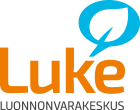The statistical comparison made by the Natural Resources Institute Finland tells how Finnish food production is placed in international comparison in the light of tens of indicators. The Foodfacts website gives information on pesticide and antibiotic residues and production practices by food categories. The website is published in the Finnish, Swedish and English language, and it serves to support Finnish companies operating on the domestic and international food market to highlight the strengths of their products.
The Foodfacts service produced jointly by the Natural Resources Institute Finland Luke and Finnish Food Safety Authority Evira provides statistical data on the quality of Finnish food and food production in relation to statistical data collected from other, mainly European countries. There is a lot of statistical data available on the food chains of the EU and other European countries, but the data is highly fragmented and there are differences in the statistical methods, which makes it difficult to compare them. Now data has been compiled into the service in a readily accessible form
“Foodfacts website is a concrete tool to support our export efforts and strengthen the valuation of Finnish food. The statistics show that the good work done for a long time for the purity of Finnish food has brought excellent results. In international comparison it is not a self-evident fact that food is safe, but this requires expertise and additional work from our food producers as well as financial inputs, each and every day. Through Foodfacts we can tell about the high quality and purity of our food in international forums and benefit from the added value that such products definitely deserve. And, it is important to have this information in the English language as well”, says Minister Jari Leppä.
Foodfacts service is part of the Government’s key project which aims to improve the food trade balance.
Good animal and plant disease situation a competitive advantage on export markets
The many verifiable strengths include the low use of antibiotics in the medication of farm animals and almost zero presence of salmonella. In both of these Finland and Sweden constitute a category of their own in European statistical comparison. The good situation in terms of animal and plant diseases is something quite unique as well. The obvious advantage of the low incidence of plant diseases is that pesticides need to be used at much lower levels than in the large European food producing countries. The statistics also show that Finland has the world’s largest harvesting area for wild organic products, 11.6 million hectares, which represents 30% of the total area in the world where such products can be collected.
The main sources used for the Foodfacts website included the EUROSTAT, EFSA and OECD statistics. The aim was to collect relevant statistical data for comparison on indicators that were expected to show the particular strengths of Finnish food production. Information is available by products groups on e.g. the levels of contaminants, medication of farm animals and production practices. Besides Evira and Luke, use was made of statistical data and expertise of other research institutes and public authorities, universities, associations and companies.
Read more about Foodfacts at www.luke.fi/ruokafakta. The Foodfacts website serves as a source of information for consumers and background support for communication and marketing by companies and various organisations. The website is funded by the Ministry of Agriculture and Forestry.
Inquiries:
Csaba Jansik, Senior Scientist, tel. +358 295 326 170, csaba.jansik(at)luke.fi
Anna-Leena Miettinen, Head of Unit, Ministry of Agriculture and Forestry, tel. +358 40 033 0812
Risto Lahti, Special Adviser to the Minister, Ministry of Agriculture and Forestry, tel. +358 50 565 0424
Photo in upper edge: Aarno Isomäki
